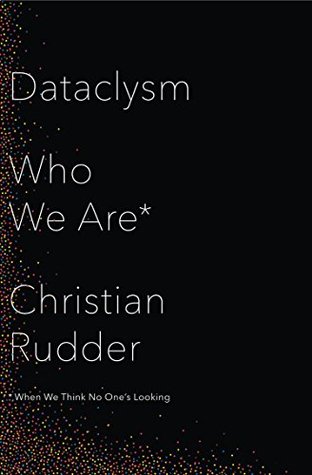More on this book
Community
Kindle Notes & Highlights
Read between
May 31 - June 2, 2024
“Beauty is looks you can never forget. A face should jolt, not soothe.”
He’s completely correct, for as with music, as with movies, and as with a wide variety of human phenomena: a flaw is a powerful thing.
to be universally liked is to be relat...
This highlight has been truncated due to consecutive passage length restrictions.
I bet she doesn’t meet many guys who think she’s awesome. In fact, I’m actually into her for her quirks, not in spite of them. This is my diamond in the rough,
Social psychologists call it the “pratfall effect”—as long as you’re generally competent, making a small, occasional mistake makes people think you’re more competent.
I found it took the sender 73 minutes and 41 seconds to hammer out those 5,979 characters of hello—his final message was about as long as four pages in this book. He did not get a reply. Neither did the gentleman sender of B, who wins the Raymond Carver award for labor-intensive brevity. He took 387 keystrokes to get to “Hey.”
Sitewide, the copy-and-paste strategy underperforms from-scratch messaging by about 25 percent, but in terms of effort-in to results-out it always wins:
A major drawback to data from dating sites is that it tells you next to nothing about people actually going on dates. Once people are together in person, they don’t need messages or ratings or any of that. It’s an irony both in the data set and in the job itself—you do it right and the customers leave. In pairs, no less!
that it’s the people you don’t know very well in your life who help ideas, especially new ones, spread.
“I don’t like the dinosaur in this graphic. It looks too fake. Use a real photo of a dinosaur instead.”
But by far the biggest cause of frustration is that people don’t understand and can’t articulate what they actually need.
In short, people appear to be heavily preselecting online for something that, once they sit down in person, doesn’t seem important to them.
You know what the difference between Tylenol and Kroger’s store-brand acetaminophen is? The box. Unless you take medicine like a king snake and plan to just swallow the package whole, there’s really no reason to pay twice as much for the “name” molecules, whose properties are determined by immutable chemical law.
People make choices from the information we provide because they can, not because they necessarily should.
one user was judging another, both people involved were white. I had to make it that way, because when you’re looking at how two American strangers behave in a romantic context, race is the ultimate confounding factor.
men tend to like women of their own race. Far more than that, though, they don’t like black women.
For whatever reason, people don’t want their network along for online dating.
Obasogie asserts that blind people’s attitudes on race reflect a lifetime of cultural absorption, as opposed to any visual reality.
A 9.0 is intense, but a 10.0 can rupture the world. Or launch a thousand ships.
In either case, the male candidates’ curves are a flat line—a man’s looks have no effect on his prospects—and the female graphs are exponential.
It’s a social scientist’s curse—what you most want to get at is exactly what your subjects are most eager to hide.
What a person searches for often gives you the person himself.
The paper suggests that autocomplete will eventually perpetuate the stereotypes it should only reflect,
Stories create status for those who share them, especially when they concern important individuals, because information about powerful people is a form of power itself.
But armed insurgency is often preceded by unarmed unrest—which itself is often propagated, even coordinated, through social media.fn5 Those nascent movements, being digitized, have attracted the attention of researchers.
In social science, knowledge, like water, often takes the shape of its vessel.
Zipf’s law, an observed statistical property of language that, like so much of the best math, lies somewhere between miracle and coincidence.fn1 It states that in any large body of text, a word’s popularity (its place in the lexicon, with 1 being the highest ranking) multiplied by the number of times it shows up, is the same for every word in the text.
“least Asian” things are all misspellings, working-class occupations, and other underachievements, like single fatherhood. And of course there’s “6'4.”
Queens is both a half mile and a world away from Manhattan.
The site itself is just a raw list of links submitted by the users, who vote, and comment, and comment on the comments, and modify, and repost all day long, in what feels like the world’s biggest group of friends sitting on the world’s longest couch.
One label found in Egypt reads “finest oil of Tjehenu” beneath the royal emblem and a pictograph of a golden oil press.
There were 300,890 people who reported over $1 million in income to the IRS in 2011. Right now there are 2,643 Twitter accounts with 1 million followers, worldwide.
That’s what I always want to remember: it’s not numbers that will deny us our humanity; it’s the calculated decision to stop being human.
But while Facebook does know a lot about you, it’s more like a “work friend”—for
Take the profile photos on OkCupid. The better-looking a photo is, the better chance it has of being outdated. That is, people find that one “great picture” and just lock it in forever.
How does anything ever become useful if it can’t be “acted on in advance of a demonstrated valid use”?


